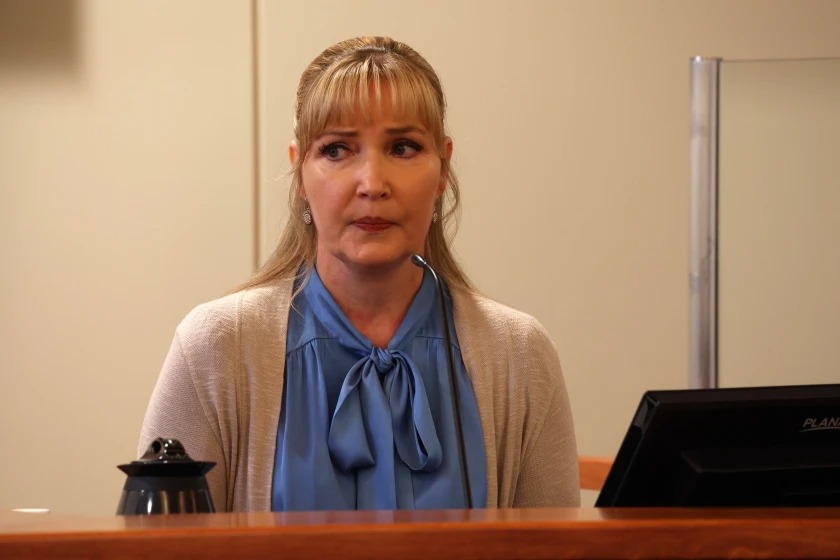MONTEVIDEO, Minn. — Susan Otterholt Kempe paddled into the Boundary Waters Canoe Area Wilderness for the first time having never spent a night camping in the woods.
“I was a farm kid. In the summertime, my folks worked. They didn’t go on vacation,” she explained.
Her good friend, Launa Tucker, had some camping experience as a Girl Scout, limited at best.
The year was 1986, and the two were among a group of 17 women from their church, St. David’s Episcopal in Minnetonka. One member of the group had wilderness experience.
Their equipment was largely borrowed, and included old-style, canvas tents and heavy, aluminum canoes. They packed their own food to cook from scratch, carrying potatoes by the pound.
“There was nothing easy about anything when we started,” said Kempe, of Montevideo.
”We didn’t know any better,” Tucker quickly added, laughing.
“Baptism by fire” is how Kempe described the first Boundary Waters adventure starting at Lake One near Ely, Minn. From a camp on the lake, the two friends made a day-long paddle and portage trip to visit several area lakes.
They arrived back at camp to learn their campmates had been worrying about whether they would ever see them again. “They thought we had been eaten by bears or something,” Kempe laughed.
Today, what became the Women of the Wilderness are now planning next year’s adventure. It will be the 40th anniversary trip for this group of church ladies who discovered the allure of the wilderness and can’t let go. Members have come and gone, and as the original group aged, it merged with a younger group of women from the church with similar outdoor interests.
Friends Sue Kempe, left, and Launa Tucker continue to enjoy annual Northwoods adventures. They are original members of a group from their church that began making annual trips to the Boundary Waters Canoe Area Wilderness in 1986. Next year will mark the 40th anniversary for the Women of the Wilderness. (Courtesy of Susan Kempe)
The two good friends are the remaining members of the original group. They are 78 years of age. The physical realities of aging have tempered their wilderness prowess.
In recent years, the WOW group has been basing itself on the edge of the Boundary Waters at a resort, from which they make paddling and hiking excursions.
Kempe grew up on a Chippewa County farm north of Montevideo near the Swift County border. She and her husband, Bob, were living in Hopkins and members of St. David’s Episcopal Church when her adventures began. Tucker is a cousin to Bob and a Twin Cities resident. She and Kempe became close friends after first meeting.
Through the years, more than 50 different women participated in Boundary Waters and Northwoods adventures as part of WOW. Some took part for many years; others for just a few.
One of the group’s long-standing traditions is to hold its own religious service while camping, complete with scripture reading and singing. At the service, they recite the names of all who have participated through the years, and remember those who have died.
Their 1986 trip, starting at Lake One, was followed in subsequent years by other adventures in the western Boundary Waters Canoe Area, with Ely as their starting point. Over time, they began to explore the lakes accessible from the Gunflint Trail, on the eastern end of this 1.1 million-acre wilderness in northeastern Minnesota.
They’ve seen moose and all variety of Northwoods wildlife, with one exception. They have never encountered a bear.
They have encountered headwinds, pelting rain and cold. On one paddle to leave the Boundary Waters, the winds were so strong, Tucker said they weren’t even sure they could do it. They didn’t seem to be making any headway, and were fast tiring but persevered, she said.
On another paddle, lightning forced the paddlers to take refuge in the woods. Strong winds chilled the drenched paddlers to the bone. They huddled together to keep those who were coldest from hypothermia.
But the memories that keep them coming back are very different. Tucker will never forget the time she and another camper took a midnight paddle on a quiet lake and watched the moonbeams shimmer on the water.
Even talk of portages can elicit good memories. Kempe and Tucker both remember the feeling of accomplishment they enjoyed for doing something they didn’t believe themselves capable of doing.
For Tucker, the fresh smells of pine and woodland vegetation are among her favorite memories of what she enjoys most in the wilderness.
For Kempe, it’s the gentle sound of the winds soughing in the trees, the tremolo of loons calling, and even the abrupt clunk of a canoe paddle shaft striking the side of the canoe.
The memories of the places and sights they’ve seen in the wilderness are many. The white sand beach on the gin-clear waters of Frost Lake immediately popped to mind for Kempe when asked about her favorite places. But then, she couldn’t help but recall the stunning view of lakes and forested hills she enjoyed from a portage on the border with Canada.
Related Articles
Scandia ready for Gateway Trail, but landowner raises issue with tunnel
DNR: Zebra mussel larvae reported in Phalen chain of lakes in Ramsey County
Minnesota DNR says ‘There should be plenty of beautiful foliage to enjoy’ this fall
Skywatch: Shoot high for celestial treasures
Belwin opens $3.6M accessible outdoor-education facility with ‘first-class experience’ — for all
Most important to both, really, was the time they spent around campfires in conversation with friends, and the one-on-one conversations with close friends that were made possible by the trips.
“This is a time we can be together,” said Kempe of the time she and Tucker enjoyed.
“What’s the magic of the woods? Communing with nature, and each other, and challenging yourself,” Kempe said in response to her own question.
“If you don’t understand it, you don’t understand it. There’s no explaining it,” she added.
There is a way to discover it, and it only requires what Kempe and Tucker did nearly 40 years ago. They dipped their paddles into a wilderness lake’s water and took on their baptism by fire. “That’s what clinched it for me,” said Kempe of accomplishing that first adventure. “I can do this.”




